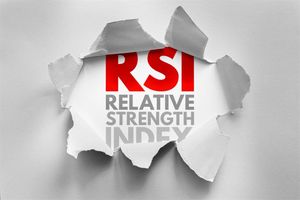First Republic Bank (NYSE: FRC), once the 14th largest bank in the United States, has faced a series of challenges culminating in its downfall. The bank’s collapse can be traced back to several factors, including mismanagement, an unsustainable business model, and the ripple effects of Silicon Valley Bank, Signature Bank, and Silvergate Bank’s collapse in March 2023.
Management at First Republic failed to address glaring interest-rate and liquidity risks, despite receiving warnings from supervisors regarding governance and control deficiencies since late 2021. The bank specialized in offering large mortgages at low rates to wealthy borrowers, a business model that has become unsustainable in the current interest-rate environment. Consequently, First Republic found itself burdened with a portfolio of mispriced loans.
The news of First Republic Bank’s collapse sent shockwaves through the financial industry. Experts quickly noted that this was not an isolated incident, as other banks were facing similar risks. The collapse served as a stark reminder that even established and respected financial institutions could be brought down by a combination of factors.
In the wake of the bank’s failure, calls for tighter regulation and increased oversight of the financial industry emerged. Some argued that the government needed a more proactive role in monitoring and addressing risks in the banking sector, while others advocated for a collaborative approach, with banks and regulators working together to identify potential risks and develop mitigation strategies.

Despite widespread concern and calls for action, some remained optimistic about the banking industry’s future, highlighting opportunities for innovation and growth amidst the challenges and risks. The financial industry’s response to the First Republic Bank debacle and the future of banking remained uncertain as the dust settled.
The collapses of SVB and Signature Bank dealt a significant blow to First Republic’s already precarious finances. With uninsured deposits well beyond the FDIC’s $250,000 limit, First Republic was exposed to the chaos that ensued after the regional banks’ failure. The bank experienced more than $100 billion in withdrawals in the first quarter, equivalent to a staggering 40% of its total deposits. If not for the assistance of 11 of the nation’s largest banks injecting $30 billion of uninsured deposits in March, the outflows could have exceeded 50%.
As First Republic’s financial situation deteriorated, its stock market value plummeted over 80% in just 10 trading sessions. Short sellers made roughly $560 million in paper profits since the decline began. Fears of a bank run intensified as a large portion of the lender’s deposits were uninsured, causing First Republic Bank’s shares to tumble by as much as 67% in a week. With disaster imminent and no time for a private rescue, the FDIC boldly seized control of First Republic and placed it under receivership.
While the FDIC’s move left a consortium of 11 banks with a staggering $30 billion in uninsured deposits, the government is expected to intervene with a systemic risk exception, ensuring protection for the substantial sum. As the financial world watches with bated breath, the fate of First Republic hangs in the balance.
First Republic Bank’s top executives attempted to persuade government officials and larger banks to provide assistance, but their pleas were met with apprehension. Other institutions were unwilling to risk their uninsured deposits and instead suggested the FDIC take control of a portion of First Republic’s assets.
In conclusion, First Republic Bank’s downfall can be attributed to mismanagement, an unsustainable business model, and the domino effect of Silicon Valley Bank and Signature Bank’s collapses. The bank’s failure to address interest-rate risk and liquidity risk, along with its reliance on uninsured deposits, ultimately led to its collapse and the need for FDIC receivership.
The post The Collapse of First Republic Bank: Mismanagement, Financial Turmoil, and Lessons Learned appeared first on Spotlight Growth.





